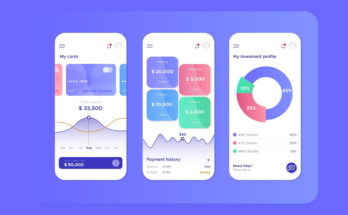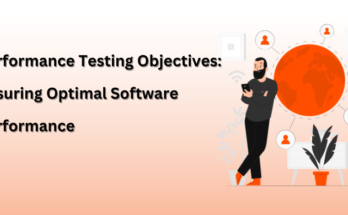Node.js is today’s most popular JavaScript runtime. Developed by Ryan Dahl and launched in 2011, Node.js has allowed developers to create fast, reliable, and scalable web applications with much fewer lines of code.
However, Node.js alone isn’t at its most effective. You will probably struggle to develop perfect web applications if you do not take advantage of useful Node.js tools. Properly implementing the right tools can make or break your system.
In this blog, we will walk you through the top 10 tools in Node.js for software development.
Top 10 Tools for Making Node.Js Software
Let’s look at some great Node.js software development tools that save you time and effort.
1. Snyk
Snyk is one of the most well-known tools for fixing open-source components. It started as a project to fix vulnerabilities in Node.js projects. Now it has evolved to detect and fix vulnerabilities in Ruby, Java, Python, and Scala apps.
Snyk usually goes through four stages:
- Finding vulnerabilities and dependencies.
- Fixing specific vulnerabilities.
- Security risks can be checked during the PR.
- Always keep an eye on apps.
Snyk can be used at any stage of the project, from writing code to CI/CD to generating reports. A great way to test Node.js projects is to look at npm packages for security risks or test them when built. Also, you can run PR checks on your applications on GitHub to make your projects more secure.
2. Express.js
Express.js contains premium features to develop mobile and web applications with ease. With this development tool, developers can easily create a robust API (Application Programming Interface) more simply.
Different features of Express, like integration, make multiple routing easier, and template engines help make applications more reliable and work better. When used together, both Express.js and Node.js play important roles. Node.js takes care of the server part, and Express.js makes it easier to put apps on websites.
3. Koa.js
Koa.js is a web framework for Node.js that is up-to-date. It has quickly proven to be more powerful, expressive, and compact, especially when building online apps and APIs.
For ES2015 and async functions to work, Node must be at least version 7.6.0.
In contrast to other frameworks of a similar nature, Koa is middleware-independent. It features built-in plugin packages that support tasks like routing, compression, caching, etc. Also, it can cut down on errors and eliminate callbacks.
4. Meteor.js
It is one of the best Node.js frameworks with the ability to script cross-platform code for Android, iOS, and web operating systems. This platform is integrated seamlessly with MongoDB and can be implemented effortlessly with any JavaScript UI widget library.
One of its remarkable features is its ability to condense 1000 lines of code into a mere 10 lines. This allows you to develop applications quickly and with ease, surpassing any other platform. Metero.js allows seamless workflow, from accessing the database to server business logic and rendering to the client.
5. Socket.io
Socket.io enables two-way, event-based communication through applications. It is one of the prominent real-time engines, providing real-time analytical insights like logs, charts, and counters.
Most chat applications leverage this Node.js development tool. Huge tech conglomerates like Zendesk, Trello, and Microsoft, as well as new-age startups, have also used Socket.io. Moreover, its helpful features like debugging, scalability, integration, and binary support help both beginners and experienced programmers.
6. Keystone
Keystone.js is an open-source web framework for Node.js. Developers can leverage it to build websites, web applications, and APIs on Node.js. It’s a Content Management System (CMS) framework that uses Express.js.
Developers will get the following advantages from it:
- After configuring their “Express” web server, they can easily connect to MongoDB.
- The integration of Express.js and MongoDB uses Mongoose, the well-known Node.js-based ODM for MongoDB.
- Programmers can easily manage their templates, views, and routes with Keystone.js.
- With Keystone.js, it’s easier to make database fields like name, email address, etc., useful in the real world.
- Keystone.js makes it easy to make a good user interface for CMS administrators.
- With it, writing code that runs in parallel is easier.
- CMSs should make it easy for people who run websites to process forms. This is easy to do with Keystone.js
7. PM2
PM2 is a popular production process manager tool for Node.js applications that is both user-friendly and effective.
Different sets of features make this tool ideal for the production environment. The PM2 community will be there to help developers and businesses at all times.
Here are the most important parts of this tool:
- Log management source map support.
- Putting containers together.
- Applications that let you watch and reload.
8. Babel
Developers can consider Babel as a toolchain that can be implemented to convert ECMAScript 2015+ code to JavaScript that is backward compatible. It is mostly used as a front-end development tool, providing support for JavaScript’s latest versions.
Below is a list of Babel’s main features:
- The ability to change syntax. Also, it uses the least amount of code possible.
- Polyfills and changes to the source code are both supported.
- Gives a support map to make it easy to find bugs.
- Does not include any built-in plugins. It is possible to create your own plugin and then use it.
If you plan to use a tool that offers fast testing for integration and unit testing, you must try Babel.
9. Mocha.js
Mocha.js is a strong, flexible test runner that helps Node.js programmers make their apps safer and more reliable. It’s very flexible and has BDD (Behavior Driven Development) or TDD (Test Driven Development) operating efficiently. Mocha.js’s testing syntax is easy to read and write.
There are many test reporters and features like test coverage reporting that make it easier to test asynchronously. This is one of the most popular JavaScript test frameworks.
10. Chai
Chai is a powerful assertion library that works well with Mocha.js and other JavaScript testing frameworks. Thanks to Chai’s flexible support for assertions, developers have more freedom when making test cases.
The Promises and callbacks in Chai allow for asynchronous testing. This helps developers make sure their software works as expected and cuts down on bugs.
Also Read: Php Vs Node.Js: Which Is Best For Business
Conclusion
Now that we have gone through the depths of these tools, we believe every Node.js developer out there is compelled by their abilities. Not only do they make your life easier, but they also allow you to focus more on the creative side.
At F95Zone Magazine, we keep bringing information about tools and technologies to our techie friends.




